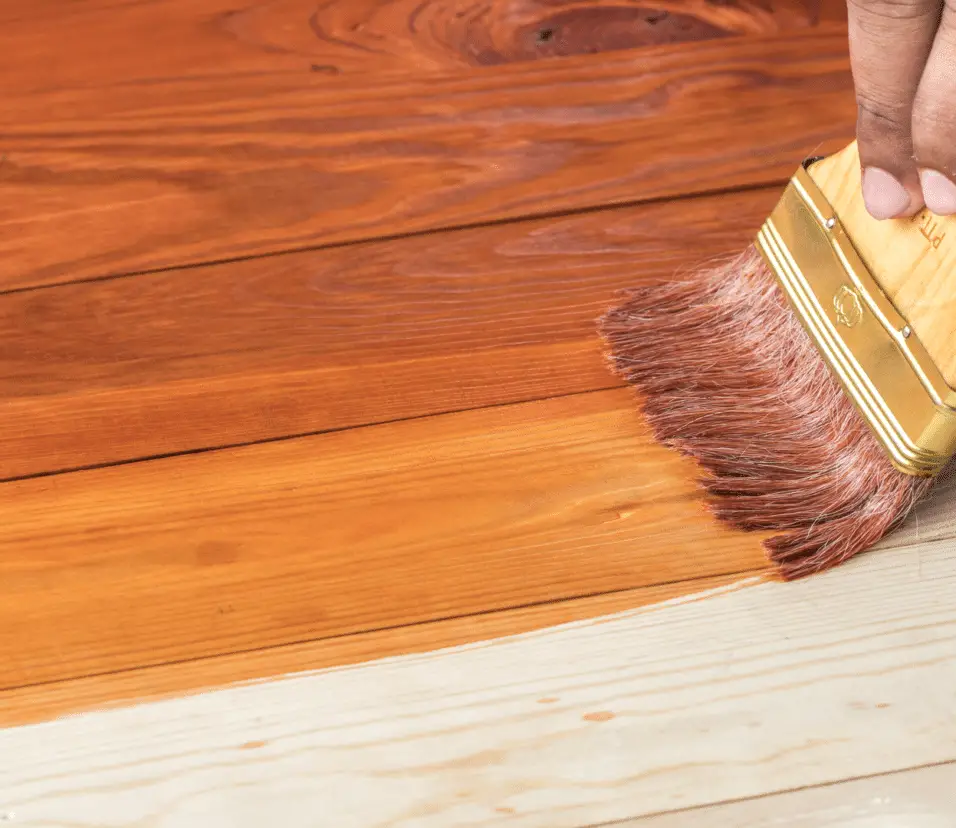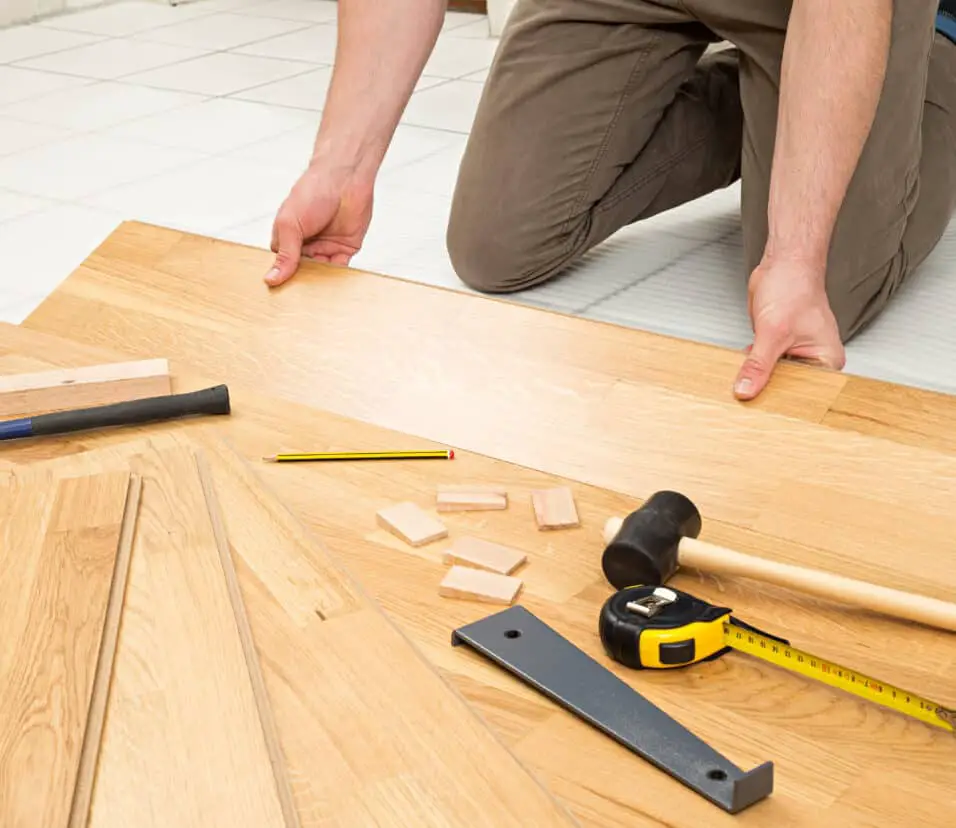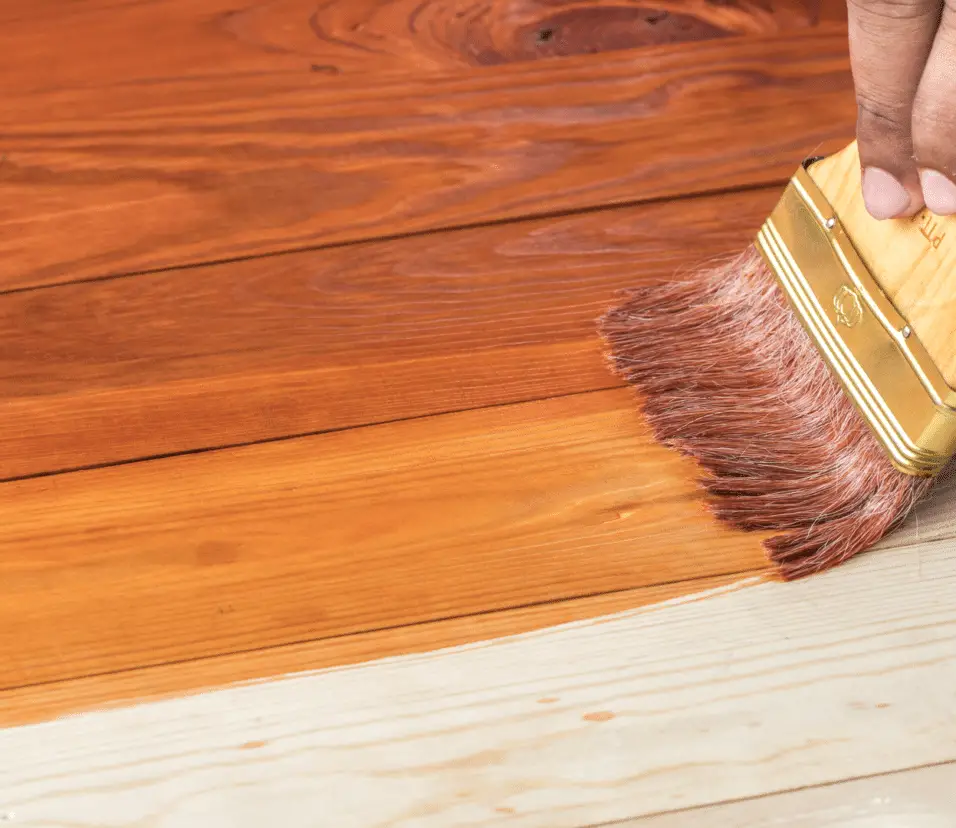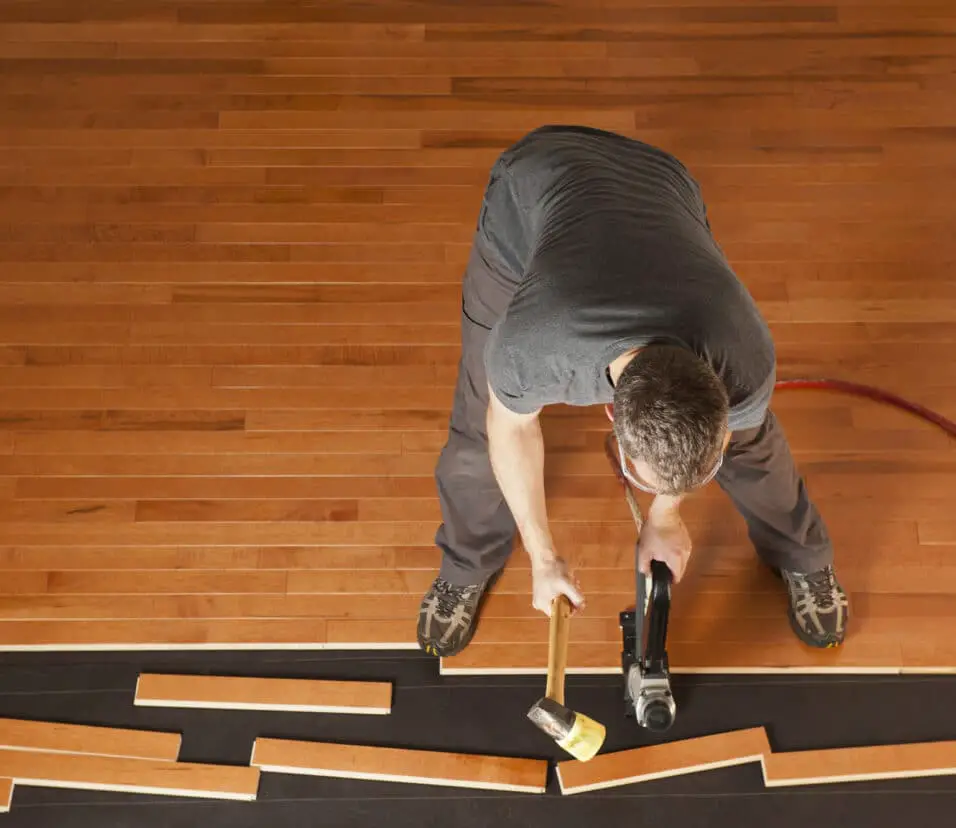How To Seal Wood Floors
Introduction
How To Seal Wood Floors: Sealing wood floors is a crucial step in preserving and enhancing the natural beauty of this timeless flooring option. Whether you have recently installed new wood floors or want to rejuvenate the existing ones, applying a protective sealant can significantly extend their lifespan and maintain their allure for years to come. This comprehensive guide will walk you through the process of sealing your wood floors, empowering you with the knowledge and confidence to tackle the task successfully.
Wood floor sealing is more than just an aesthetic choice; it plays a pivotal role in safeguarding the integrity of the wood against various threats. By creating a barrier on the surface, a quality sealant prevents moisture infiltration, minimizing the risk of warping, rot, and unsightly stains caused by accidental spills. Additionally, sealing offers an extra layer of protection against scratches, scuffs, and everyday wear, ensuring your wood floors retain their luster even in high-traffic areas.
In this guide, we will explore the different types of wood floor finishes available, from polyurethane and oil-based finishes to water-based alternatives, wax, and penetrating oils. Understanding the unique characteristics and benefits of each will aid you in selecting the most suitable option for your specific flooring needs.
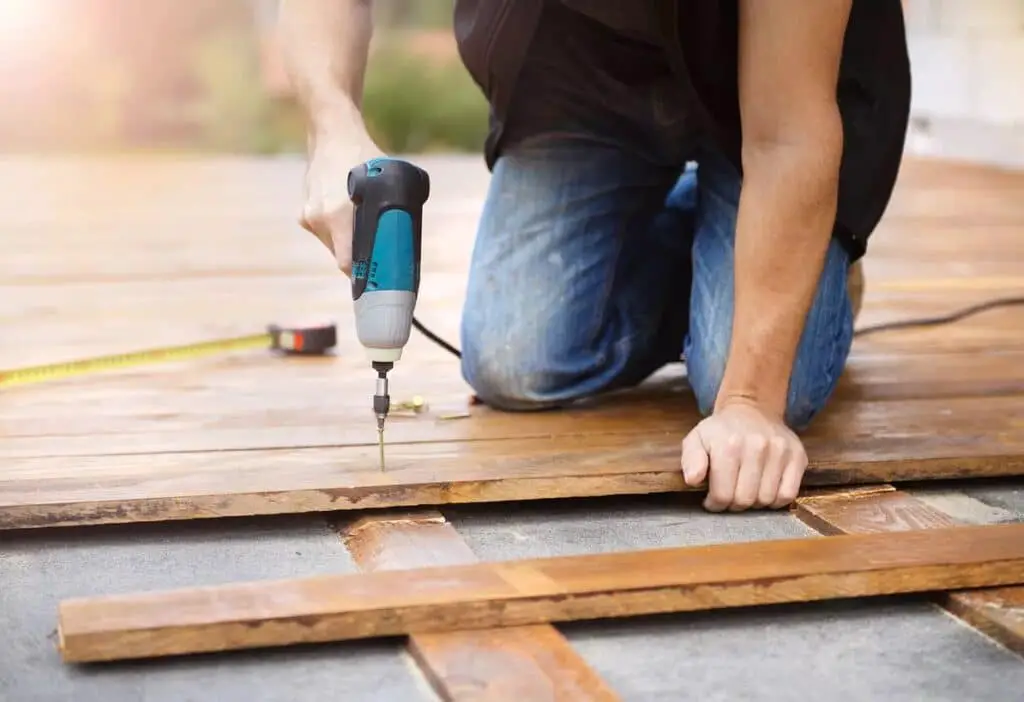
Should Wood Floors Be Sealed?
Your floor’s treatment can bring out grain and color, but continuous use damages your wood. Sealants protect hardwood floors from finish damage, especially untreated ones.
Sealing wood floors ensures its durability, attractiveness, and performance. Wood floors are sealed with a finish to prevent moisture, stains, scratches, and wear. For homeowners and business owners with wood floors, sealing is highly recommended due to its many benefits.
Wood flooring are sealed to prevent moisture damage. Water can cause warping, swelling, and rot in wood. Sealants make wood more water-resistant, making it suited for spill-prone or humid regions. Sealing wood floors reduces stains. The sealer keeps liquids and contaminants from permeating the wood, making spills easier to remove and maintaining the floor’s beauty.
Scratch and scuff protection is enhanced by sealing. Daily foot traffic, furniture movement, and other activities can mark wood. Properly sealed floors resist such abrasions, maintaining their shine.
What Is The Best Way To Seal A Wooden Floor?
A methodical technique to sealing a timber floor produces a long-lasting, beautiful finish. To protect your wooden flooring effectively, follow these steps:
Preparation: Wooden floors must be prepared before sealing. Clean the surface thoroughly to eliminate dust, debris, and residues. Broom, vacuum, or dust mop the floor to remove debris. Lightly sand any rough spots of the floor to make it smooth for sealant.
Choosing the Right Sealant: Sealant selection is crucial. There include water-based polyurethane, oil-based coatings, penetrating oils, and wood-specific sealants. When choosing a floor, consider its function, foot traffic, and personal preferences. Each sealant has its own application and drying time.
Use a clean brush, roller, or applicator pad to apply sealant evenly and abundantly. Sealant manufacturer directions should be followed. Use manageable sections to avoid apparent borders and inconsistent covering.
Multiple Coats: Sealant should be applied multiple times for maximum protection. Two to three coats are usually enough, depending on the sealant and wood condition. Following the suggested drying time, let each coat dry before applying the next.
Allow enough time for the sealant to dry and cure after applying all coats. This time depends on sealant, humidity, and temperature. Avoid foot traffic and heavy furniture on the freshly sealed floor while it cures.
How Do You Seal And Waterproof A Wood Floor?
However, the general guideline is to apply at least three coats of waterproofing polyurethane or resin and let each dry before moving on. Before applying the next coat, sand any bubbling or wrinkling.
Wood floors need sealing and waterproofing to prevent moisture damage and last longer. Water intrusion is prevented by sealing the wood surface and providing a waterproof layer. Clean the wood floor thoroughly to eliminate dust, filth, and debris.
Broom, vacuum, or dust mop the surface to remove particles that could interfere with sealing. Lightly sand any rough sections of the floor to make it smooth for sealant and waterproofing. Choose a high-quality wood floor sealer that matches your wood and waterproofing material. Water-based polyurethane or oil-based coatings are preferred for sealing wood floors due to their longevity and protection.
Spread sealant evenly and generously on the wood floor with a clean brush, roller, or applicator pad. Work in tiny parts to achieve uniform application and follow the manufacturer’s coat and drying recommendations. The sealant should dry entirely as specified. Usually, water-based sealants take a few hours and oil-based ones longer. Ventilate the drying space.
How Often Should Wood Floors Be Sealed?
Your hardwood floor finish should last 7-10 years with regular use. High-traffic or sunny floors may need more frequent refinishing. If refinished every ten years, hardwood flooring can last 60 years!
How often wood floors should be sealed depends on the sealant. Water-based sealants may need more frequent reapplication than oil- or penetrating oil finishes. Water-based sealants last 3 years before recoat, whereas oil-based finishes can last 5 years.
Wear and tear on wood flooring depends on foot traffic. Hallways, entryways, and living rooms are busy and prone to wear, scratches, and stains. These places may need more frequent sealing than less-used ones.
Sealant effectiveness can be extended with proper management. Cleaning wood floors regularly, using proper solutions, and promptly handling spills will preserve the seal and prevent the need for periodic resealing.
Check wood flooring for wear. Resealing may be necessary if the finish is thin, water is no longer beading, or the wood is becoming more stainable.
Environmental factors such as humidity levels, exposure to sunlight, and temperature fluctuations can impact the longevity of the sealant. High humidity levels can cause wood to expand and contract, potentially compromising the seal. Sunlight exposure can lead to fading or discoloration of the wood and the sealant.
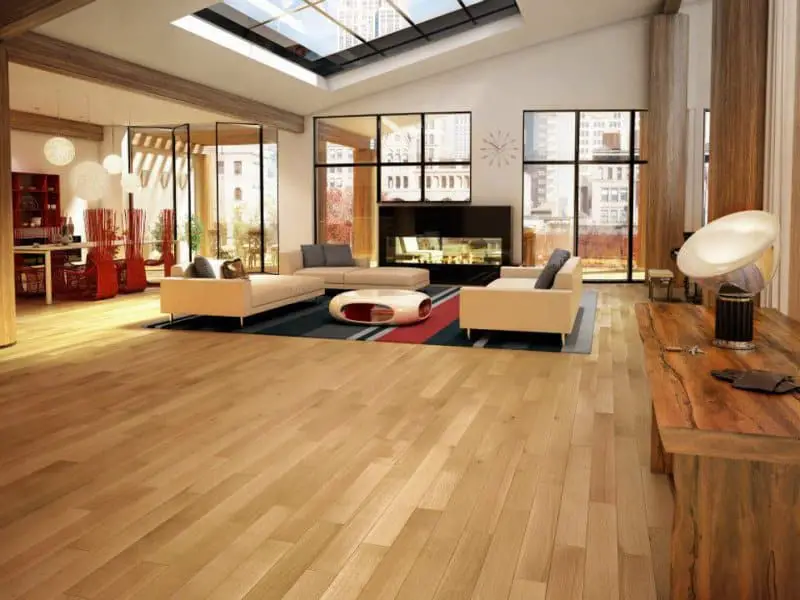
How Do You Seal Wood Floors Naturally?
Tung and Linseed oil are the best natural penetrating oils for hardwood floors. The technical term for these oils is drying oils because they polymerize, forming a long-lasting protective layer on wood and stone. Tung provides the most durable finish of the oils and linseed is not far behind.
Sealing wood floors naturally involves using non-toxic and environmentally friendly products to protect and enhance the wood’s appearance without the use of conventional chemical-based sealants.
Choose Natural Sealants:
Look for natural, plant-based, or food-grade sealants specifically designed for wood surfaces. Some common natural sealants include pure tung oil, linseed oil, beeswax, and carnauba wax. These substances are non-toxic and do not emit harmful fumes, making them safe for indoor use.
Clean the Wood Floors:
Start by cleaning the wood floors thoroughly to remove any dust, dirt, or residues. Use a mild wood floor cleaner or a mixture of water and vinegar to clean the surface effectively.
Apply the Natural Sealant:
Depending on the type of natural sealant chosen, follow the manufacturer’s instructions for application. For oils like tung oil or linseed oil, apply a thin layer using a clean cloth or brush, ensuring even coverage. For wax-based sealants like beeswax or carnauba wax, melt the wax and apply it in a thin, uniform layer. Allow the sealant to penetrate the wood for the recommended time.
Buff the Surface:
After applying the natural sealant, gently buff the wood floor with a soft cloth to remove any excess product and achieve a smooth, polished finish.
Multiple Coats:
For optimal protection, you may choose to apply multiple coats of the natural sealant. Allow each coat to dry thoroughly before applying the next one, following the recommended drying time.
Regular Maintenance:
To keep the sealed wood floors looking their best, maintain them regularly using a dry mop or soft broom to remove dirt and debris. For cleaning, use a damp, not wet, mop with a mild wood floor cleaner, avoiding excessive water that could damage the natural sealant.
Reapply as Needed:
Over time, the natural sealant may wear off, especially in high-traffic areas. Keep an eye on the wood floors, and when you notice signs of wear or diminished water resistance, reapply the natural sealant as required.
Can You Just Seal Hardwood Floors?
It’s a quicker, easier, and less expensive process than refinishing. Resealing is a good option when: Your floor is still in relatively good condition, with only light scratches and no significant discoloration. You’re happy with the current colour of your floor.
Sealing hardwood floors involves applying a protective sealant on the surface of the wood to create a barrier against moisture, stains, scratches, and wear. It helps extend the life of the hardwood, preserves its natural beauty, and makes maintenance easier.
Sealing is a popular choice for homeowners and property managers looking to enhance the durability of their hardwood floors without dramatically altering the appearance. The process involves selecting the appropriate type of sealant based on the specific needs of the flooring and applying it correctly.
There are different types of sealants available, such as polyurethane, oil-based finishes, and water-based finishes. Each type has its own advantages and characteristics, and the choice depends on factors like the type of hardwood, the level of foot traffic, and personal preferences.
Sealing hardwood floors is typically less invasive and more cost-effective compared to other refinishing methods such as sanding and staining. It can be particularly beneficial for floors that are still in good condition but need an extra layer of protection.
It’s important to note that while sealing provides excellent protection against everyday wear, it is not a solution for addressing deep scratches, gouges, or significant damage. In such cases, refinishing the floors by sanding and applying a new finish may be necessary.
How long does hardwood floor seal last?
You may be wondering how long polyurethane lasts on hardwood floors. Depending on many factors, like your lifestyle and type of finish, polyurethane can last between three to six years. However, if you see damage on your floors, it may be time to reapply a fresh finish to your hardwood.
The type of sealant used plays a significant role in determining its lifespan. Water-based sealants typically have a shorter lifespan, lasting around 3 years, while oil-based finishes and penetrating oils can provide protection for up to 5 years or even longer. High-quality sealants may offer better durability and longevity.
The level of foot traffic the hardwood floor experiences can impact the wear and tear on the sealant. High-traffic areas, such as hallways, entryways, and living rooms, may require more frequent resealing compared to less frequently used spaces.
Proper maintenance and care can extend the life of the hardwood floor seal. Regularly cleaning the floors with appropriate products, promptly addressing spills, and using gentle cleaning methods can help preserve the sealant’s effectiveness.
Environmental conditions can also influence the durability of the hardwood floor seal. Exposure to sunlight can lead to UV damage and discoloration, while fluctuations in humidity levels can cause the wood to expand and contract, affecting the sealant’s integrity.
Keep an eye out for any visible signs of wear on the wood floors. If you notice areas where the finish is wearing thin, the wood is becoming more susceptible to stains, or water is no longer beading up on the surface, it may be time to consider resealing. Whether you choose water-based or oil-based sealants, wax, or penetrating oils, the right selection depends on your specific needs, preferences, and the type of wood flooring you have.
Why is it important to seal wood floors?
Sealing wood floors is essential to prevent water damage, warping, and rot, as well as to protect against stains and scratches, keeping the wood looking pristine and extending its lifespan.
Sealing wood floors is of utmost importance as it serves as a vital protective measure that enhances the longevity and beauty of this natural flooring material. There are several compelling reasons why sealing wood floors is crucial:
Moisture Protection:
Wood is a porous material that readily absorbs moisture. Without proper sealing, water and spills can penetrate the wood, leading to warping, cupping, and even rot.
Stain Resistance:
Wood floors are susceptible to staining from spills, pet accidents, and other mishaps. Whether you choose water-based or oil-based sealants, wax, or penetrating oils, the right selection depends on your specific needs, preferences, and the type of wood flooring you have.
Scratch and Wear Resistance:
High-traffic areas or heavy furniture movement can lead to scratches and wear on the wood floor. A quality sealant provides a protective layer that can withstand daily use and reduces the risk of surface damage. Whether you choose water-based or oil-based sealants, wax, or penetrating oils, the right selection depends on your specific needs, preferences, and the type of wood flooring you have.
Enhanced Durability:
Sealing wood floors significantly improves their durability.
Easier Maintenance:
Sealed wood floors are easier to clean and maintain. Regular sweeping, vacuuming, and occasional damp mopping are usually sufficient to keep the floors looking pristine. The sealed surface prevents dirt and debris from getting ingrained into the wood.
Preserving Appearance:
Sealing enhances the natural beauty of the wood, deepening its color and highlighting its grain patterns. It adds a subtle sheen that contributes to a more attractive and polished appearance. Whether you choose water-based or oil-based sealants, wax, or penetrating oils, the right selection depends on your specific needs, preferences, and the type of wood flooring you have.
Longevity and Cost-Effectiveness:
By protecting the wood from damage and wear, sealing can significantly extend the lifespan of the floors. This reduces the need for costly repairs or refinishing, making it a cost-effective investment in the long run.
Indoor Air Quality:
Some sealants are designed to be low or zero-VOC (volatile organic compounds), which means they emit fewer harmful fumes during application. This contributes to better indoor air quality and a healthier living environment.
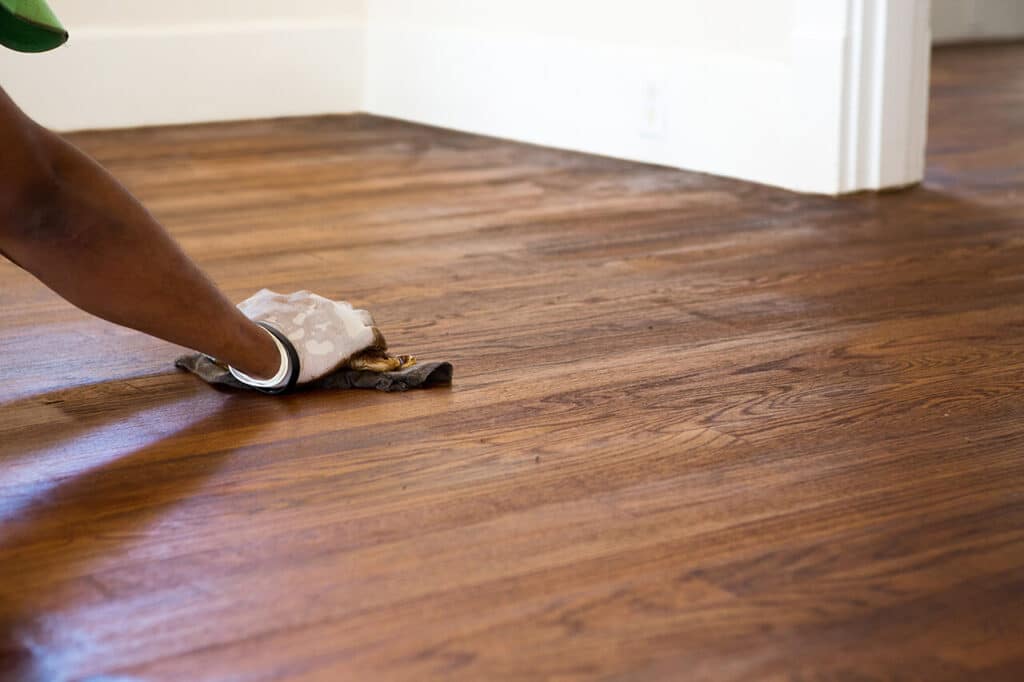
Conclusion
Sealing wood floors is an essential and rewarding process that offers numerous benefits for homeowners and businesses alike. Through this comprehensive guide, we have explored the various aspects of sealing wood floors, from understanding the significance of sealing and its advantages to learning the step-by-step procedures for a successful sealing project.
Sealing wood floors provides a protective barrier against moisture, stains, scratches, and wear, ultimately prolonging the life of the wood and maintaining its natural beauty. Whether you choose water-based or oil-based sealants, wax, or penetrating oils, the right selection depends on your specific needs, preferences, and the type of wood flooring you have.
Proper preparation, including thorough cleaning and possibly light sanding, ensures a smooth and receptive surface for the sealant, leading to more effective results. Applying multiple coats of the chosen sealant and allowing sufficient drying and curing time between each application contributes to a durable and long-lasting finish.



